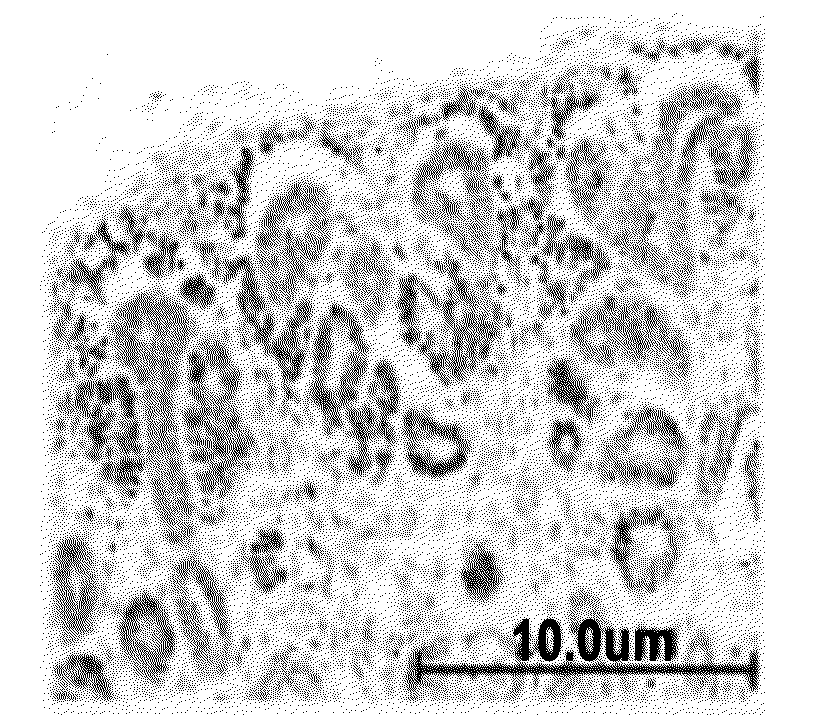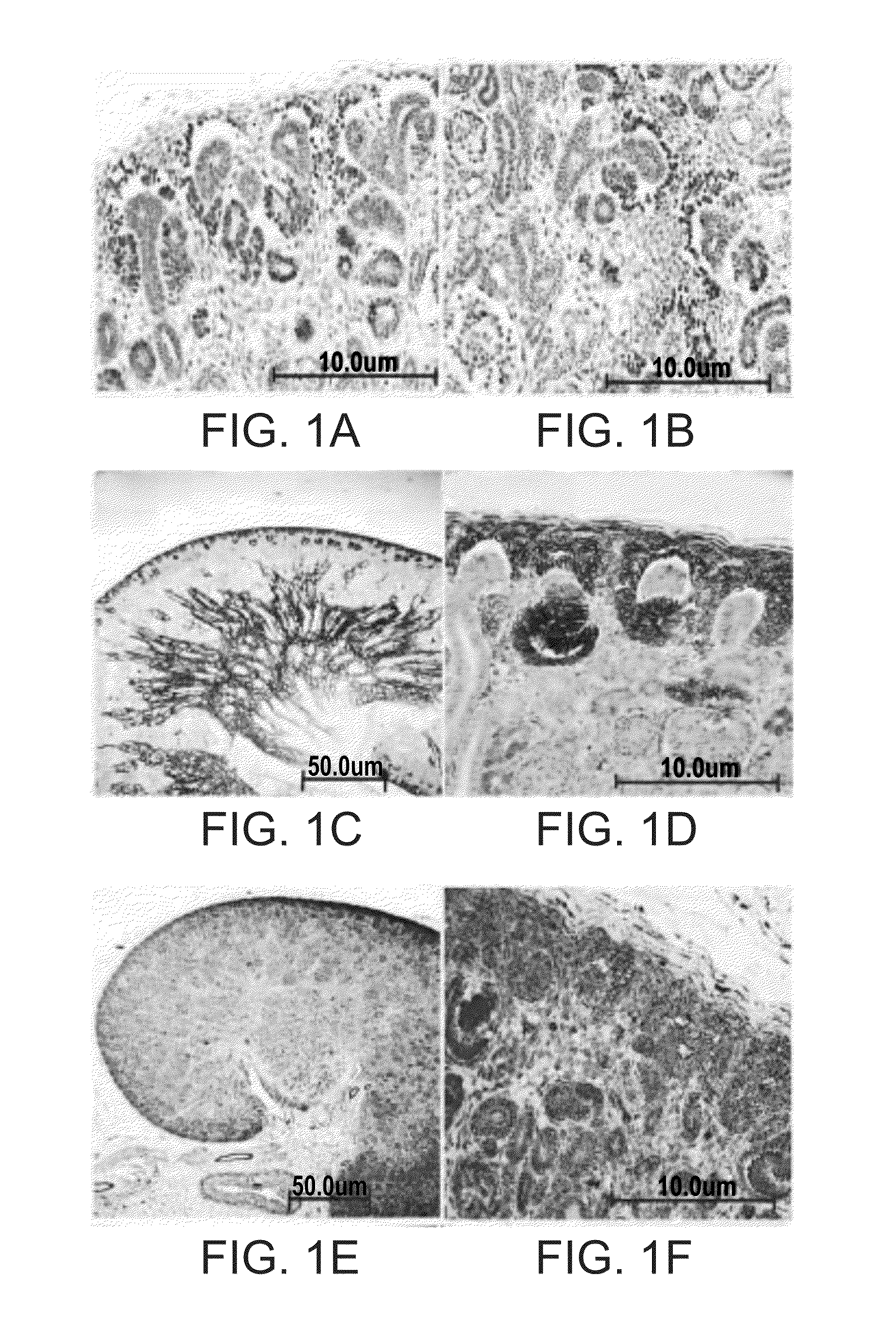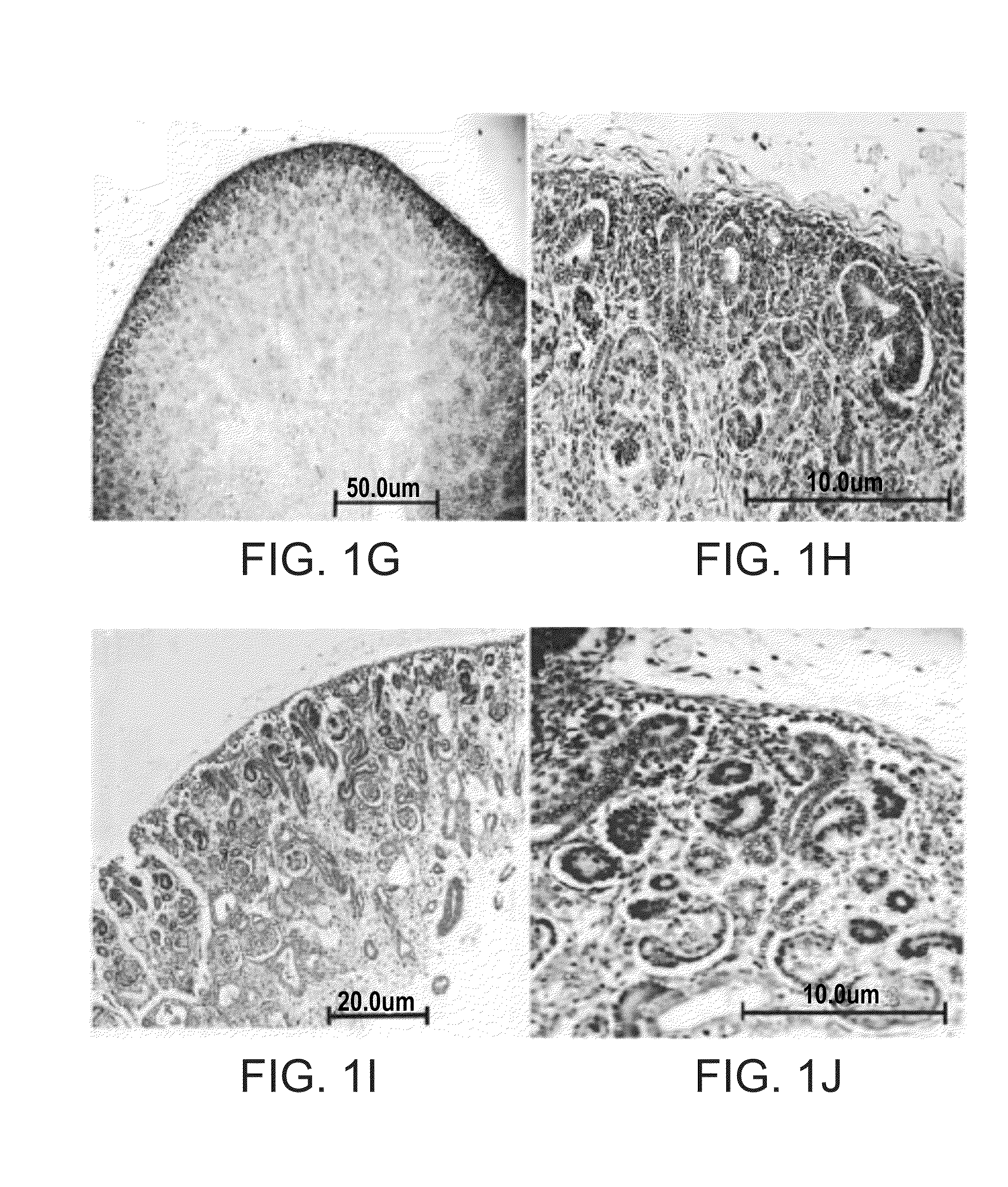Isolated populations of renal stem cells and methods of isolating and using same
a technology of stem cells and isolating populations, applied in the direction of biocide, animal repellents, drug compositions, etc., can solve the problems of inability to sustain life, inability to meet the needs of patients,
- Summary
- Abstract
- Description
- Claims
- Application Information
AI Technical Summary
Benefits of technology
Problems solved by technology
Method used
Image
Examples
example 1
Determination of Cell Surface Progenitor Markers in Human Fetal Kidneys
[0174]Materials and Methods
[0175]Establishment of a primary culture from human fetal kidney (HFK): HFK samples were retrieved from aborted fetuses.
[0176]Collected human fetal kidney cells (HFK) were washed with cold HBSS (Invitrogen, Carlsbad, Calif., USA) and minced into ˜1 mm cubes using sterile surgical scalpels. The dissected tissue was then incubated for 2 hours at 37° C. with Iscoves's Mod Dulbecco's Medium (IMDM) (Invitrogen) supplemented with 0.1% collagenase II (Invitrogen). The digested tissue was then gradually forced through a 100 μm, 70 μm and 50 μm cell strainer to achieve a single cell suspension, and after removal of the digesting medium resuspended in growth medium [IMDM containing 10% fetal bovine serum (Invitrogen), 100 ng / ml EGF, 100 ng / ml bFGF and 10 ng / ml SCF (R&D Systems, Inc, Minneapolis, USA)] and plated in flasks. Cells were incubated at 37° C. and 5% CO2. Medium was replaced every day f...
example 2
HFK Cell Sub Populations Sorted According to Specific Markers Retain in Culture Molecular Aspects of Regional Identity and Stemness Profile
[0202]Because immunostaining of HFK demonstrated that the markers are regionally specified, the present inventor wanted to verify that regional differences are maintained in HFK cells. As a proof-of-principle sorted NCAM+EpCAM−, NCAM+EpCAM+ (containing putative MM stem- and MM-derived progenitor cells, respectively) were compared with NCAM− HFK cell populations as NCAM and EpCAM are important surface markers for the present characterization system.
[0203]Materials and Methods
[0204]Magnetic cell sorting: At least three independent kidney samples were used for sorting of NCAM / EpCAM as well as PSA−NCAM subpopulations. Sorted cells were of primary cultures established from the same HFK used in the FACS analysis of progenitor marker expression. Cells were detached with Trypsin / EDTA and resuspended in growth medium. Cells were transferred trough 30 μm P...
example 3
HFK Cell Sub Populations Sorted According to Specific Markers Show Enhanced ‘Stemness’ Function
[0212]Following verification of the renal ‘stemness’ gene profile in human renal stem / progenitors sorted according to specific markers, the present inventors analyzed these fractions for clonogenic ability, an important feature of stem / progenitor cells.
[0213]Materials and Methods
[0214]Limiting dilution assay was performed on HFK cells sorted according to NCAM and PSA−NCAM. Both positive and negative fractions were plated in 96-well micro well plates at 0.3, 1, 3 and 5 cells per well dilution. The number of colonized wells was recorded after 3-4 weeks.
[0215]In addition HFK cells were sorted according to ALDH expression and the clonogenic ability was tested in serum containing medium and serum free medium.
[0216]Flow cytometry: Flow cytometry was performed as described in Example 1, herein above. Detection of cells with high ALDH1 enzymatic activity was performed using the ALDEFLUOR kit (Stem...
PUM
 Login to View More
Login to View More Abstract
Description
Claims
Application Information
 Login to View More
Login to View More - R&D
- Intellectual Property
- Life Sciences
- Materials
- Tech Scout
- Unparalleled Data Quality
- Higher Quality Content
- 60% Fewer Hallucinations
Browse by: Latest US Patents, China's latest patents, Technical Efficacy Thesaurus, Application Domain, Technology Topic, Popular Technical Reports.
© 2025 PatSnap. All rights reserved.Legal|Privacy policy|Modern Slavery Act Transparency Statement|Sitemap|About US| Contact US: help@patsnap.com



